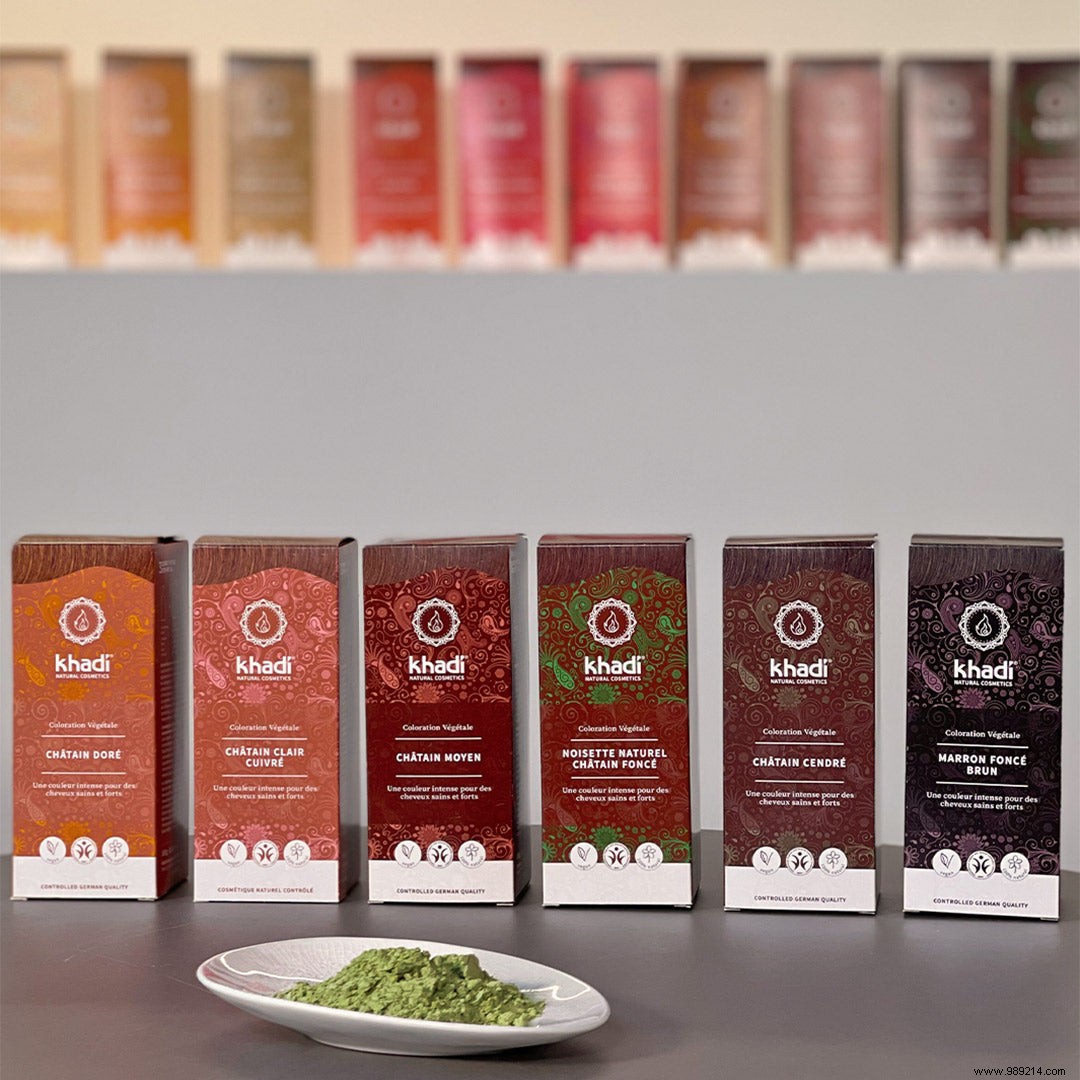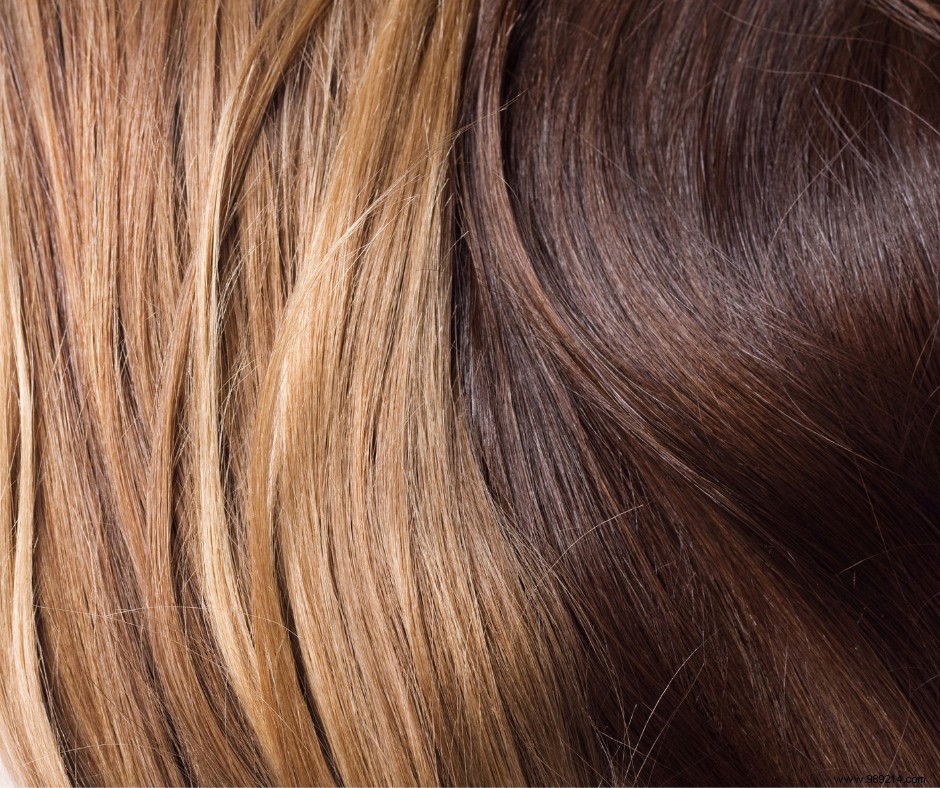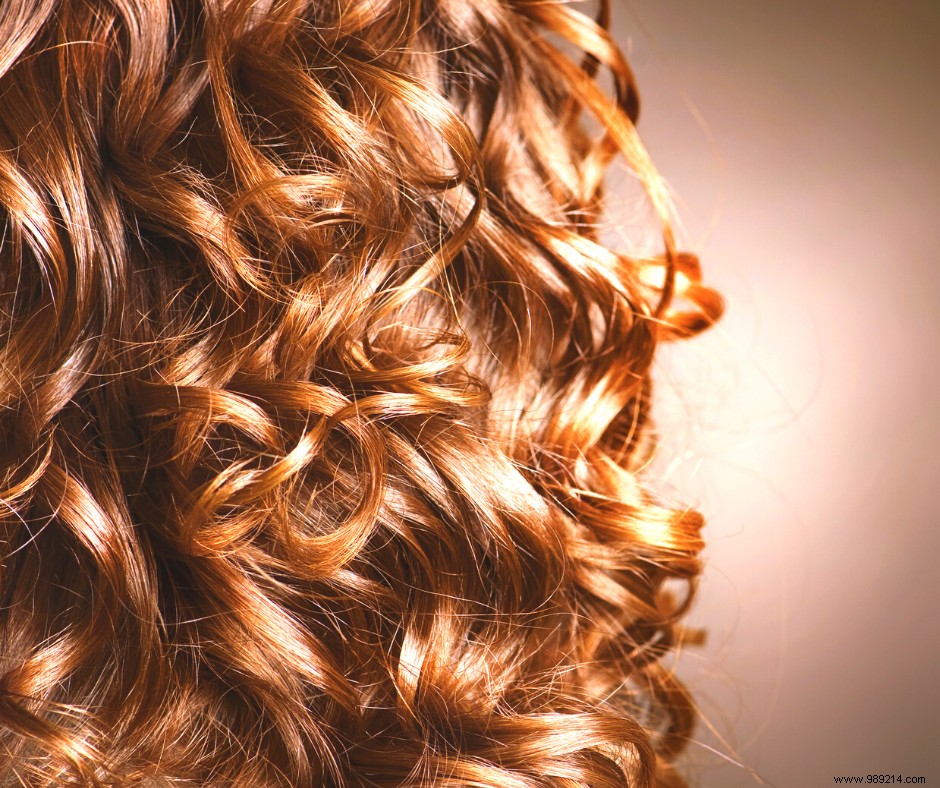Ombré hair, copper hair, caramel or chocolate balayage… Each season has its own hair trend! What if we told you that it was possible to opt for a flamboyant hair color without using a single chemical ingredient? Yes yes ! In this article, we tell you everything about vegetable coloring, how it works, its benefits. Which vegetable coloring to choose :follow the guide!
As its name suggests, a vegetable hair color contains exclusively natural pigments from plants (we then speak of “tinctorial” plants meaning “which is used to dye”).
💡 Unlike more traditional colors, vegetable coloring is chemical-free. Consequence:its coloring power is quite moderate. It is also said that vegetable coloring is added to the natural color of a person. it is not possible, for example, to go from blond to brown with vegetable coloring. Yes:vegetable coloring colors, but does not bleach. This is the whole nuance!
👉 Often, the vegetable color is based on henna, a dye of vegetable origin used for thousands of years.

Behind each vegetable color hides one (or more) tinctorial plant(s). Long before the rise of petrochemicals in the 20th century, it was these natural dyes which were used by humans to dye or paint. These plants were used to dye textiles, to paint (makeup, body paint, etc.), and were even used as natural food dyes.
As Nature is generous, there are many kinds of tinctorial plants - each offering, in general, a specific shade, thanks to their natural pigments.
🔴 For example, to get a red tint in a natural way, we generally opt for henna, safflower, annatto...
💛 To get a yellow tint , the best known plants are turmeric, chamomile, saffron...
🔵 To get a blue tint , indigo, dyers' pastel or Assam indigo are reference plants.
One could very well ask:“Why choose vegetable coloring when my usual dye works very well?”
First thing to know:classic hair colors are full of particularly controversial ingredients . Parabens, ammonia, oxidants, heavy metals (such as lead or mercury), silicones, sulphates, aromatic amines… In addition to damaging the hair in the long term, all these components are particularly harmful to the body. Some are carcinogenic, others disrupt the hormonal system, create allergies…
⚠️ According to a study published in "The International Journal of Cancer", chemical coloring would increase the risk of developing breast cancer by 9%. Just that!
Behind their beautiful promises and their glamorous universe, the chemical colorings raise real health issues… and ecological !
Yes:when a product contains chemical substances, it has a good chance of impacting the environment... Because these substances can pollute water, soil or air (during the manufacture of the product, its use or of its degradation).

For its part, plant coloring is on the rise. It must be said that she has everything going for her. In addition to strengthen the hair , it allows them to be illuminated in a natural way, without posing the slightest risk to the health of consumers! In other words, if you want to preserve your health, strengthen your hair fiber while enjoying a wide range of colors, vegetable coloring is an excellent compromise.
💡 To remember
Unlike chemical dyes, vegetable dyes do not penetrate the hair fiber , they only coat the scales of the hair. They are therefore the best allies of healthy hair !
We will have understood:plant pigments are not lacking in virtues. At Nuoo, we are well aware of this. This is why we only offer vegetable colors on our e-shop. In the Dyeing section, you will therefore find herbal and henna dyes.
One might ask:
In fact, the best plant hair color is the one that goes well with your natural color . Yes:it is this original color that will determine the final result of your dyeing!
For example, a natural coloring guaranteeing chestnut tones will not provide the same result on light or dark hair. Applied to light hair, the natural chestnut coloring will produce a dark blond color, even an intense chestnut. On originally dark hair, on the other hand, it will create chocolate shades.
👉 In other words:it is imperative to choose a natural shade adapted to your original hair color , if you wish to benefit from an optimal result.
This is also the only limit (and it is minimal) of vegetable colorings:the result obtained by a vegetable coloring is always unique - therefore unpredictable!
Did you know ? Plant-based hair colors have a real “care dimension”. They are said to "sheath" the hair, giving it shine and substance . For this reason, there are vegetable colorings without any coloring effect! Yes:this is the case with neutral henna. Its main mission? Bring shine and strength to the hair , quite simply.
Henné de Shiraz neutral volume care henna without coloring effect purifies oily scalps.
Radico's Henna Powder Treatment is a "coloring treatment". In other words, it brings a beautiful coppery color to the hair while strengthening the hair. Its little extra? It sanitizes leathers with oily tendencies.
💡 The vegetation colorings allow you to color the hair while rebalancing the scalp.
As you know, at Nuoo we encourage you to take care of yourself with natural and healthy products . This approach is all the more essential if you want to maintain your natural color. Why ? Well, it's simple. The chemicals found in traditional shampoos (sulfates, parabens, silicones, etc.) may well attack the natural pigments present in your vegetable coloring. Might as well explore the vegetable option to the end by systematically favoring natural hair care!

The advantages of vegetable colorings are legion. They strengthen the hair fiber, balance the scalp, provide substance and shine... All this, in addition to coloring the hair with shimmering shades, and/or covering white hair! It is therefore a very good alternative with traditional coloring.